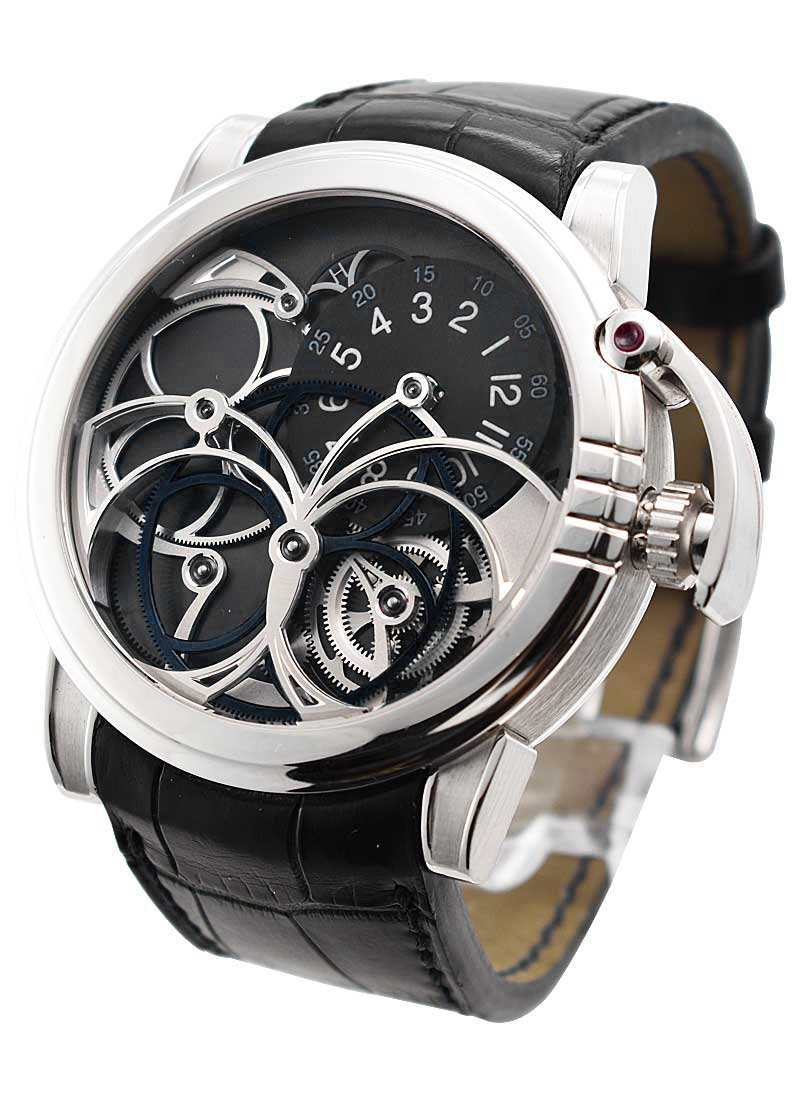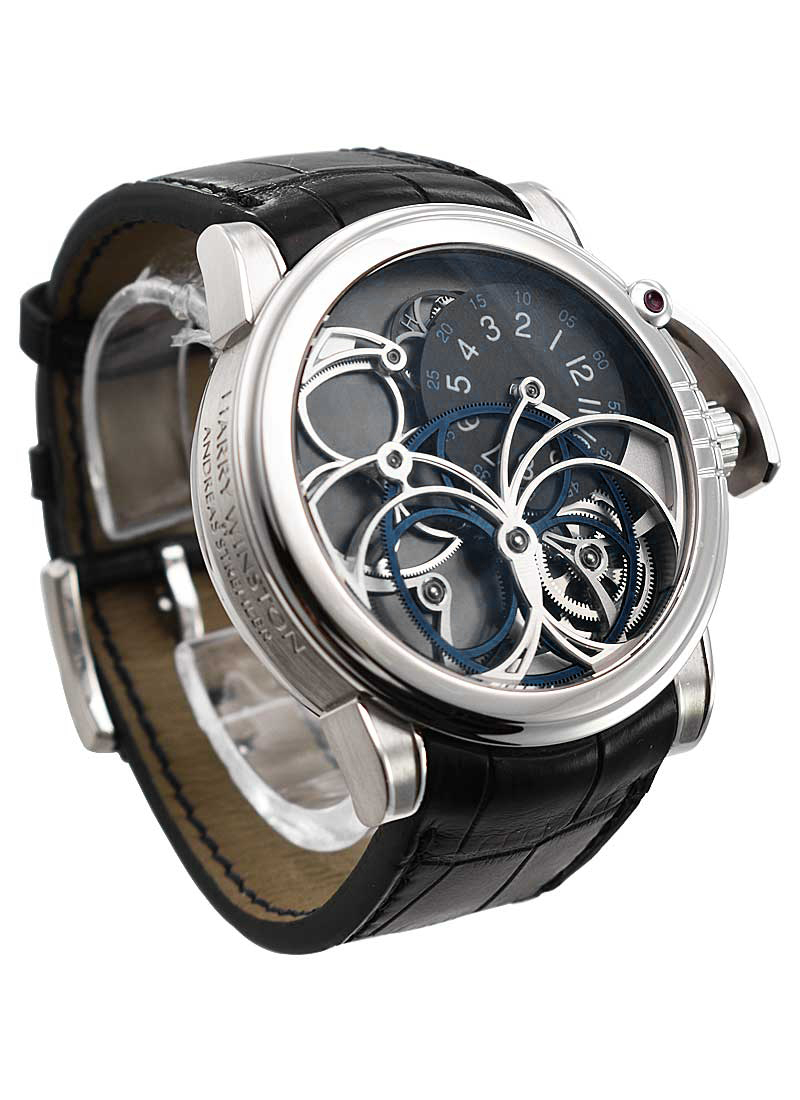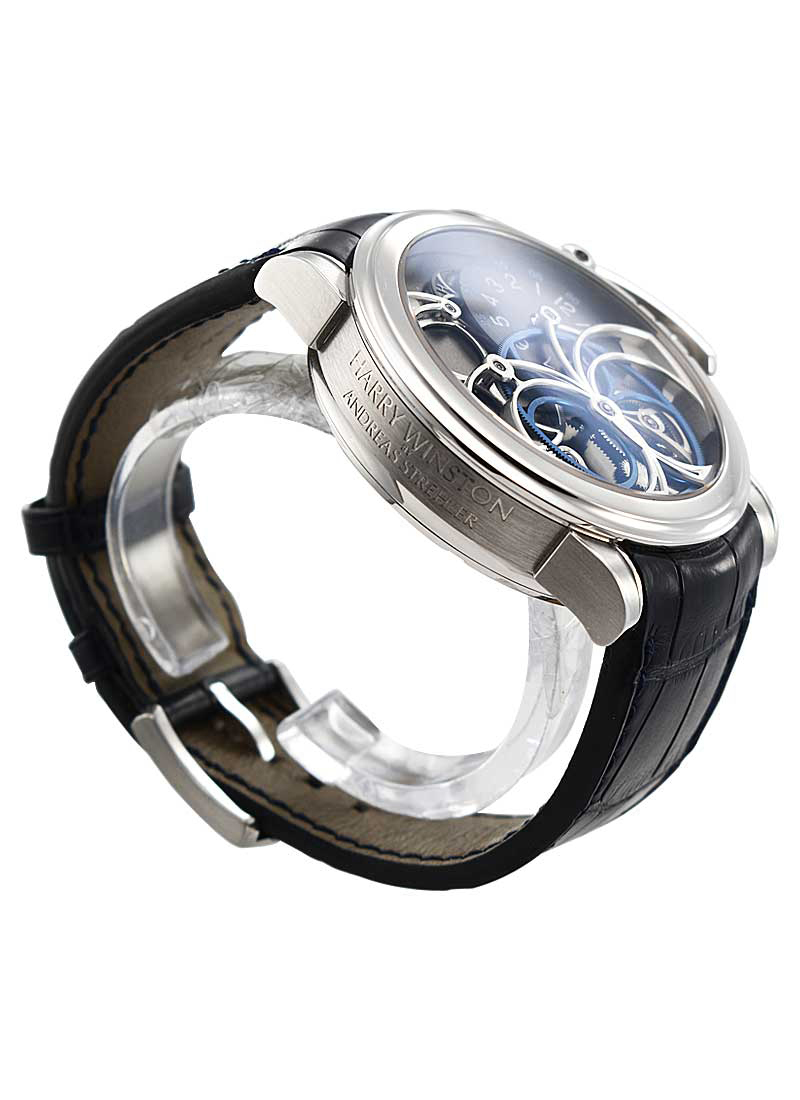Harry Winston
Opus 7 Made by Andreas Strehler in White Gold - Limited Edition ot 50 pieces
on Black Crocodile Leather Strap with Black Dial
| Model #: | 500/MMAS45WL |
| Case Material: | 18KT White Gold |
| Case Size: | 45mm |
| Movement: | Manual |
| Dial: | Black |
| Bracelet: | Black Crocodile Leather |
| Retail Price: | $242,500 |
Condition: This watch is in New Condition.* Complete with Box and Papers.
$ 97,500
* We have graded this watch to be in Brand New Condition The Purchaser of this watch Will be it's FIRST owner.
Description
This watch is also known as: OPUS7, 7OPUS, 500-MMAS45WL
In 2001, Max Büsser, then the director of Harry Winston, had the idea to present each year a special edition watch together with an independent watchmaker. This project was to be named Opus plus the last digit of the respective year. The list of the independent watchmakers involved in the project read like the who-is-who of watchmaking. Originally, only five models were planned, the project was to end with end of Max Büssers tenure at the helm of Harry Winston.
When in 2006 Hamdi Chatti took over from Max Büsser, he decided to continue the Opus series. The Opus6 had been made with Robert Greubel and Stephen Forsey and so Hamdi Chatti and Robert Greubel came to Winterthur to pass the baton on to Andreas Strehler.
For the future Opus7, Andreas Strehler first presented the dormant Papillon and as an alternative the switching displays of the Zwei. Hamdi Chatti liked both and asked Andreas Strehler to combine the aesthetics of the gear wheels of the Papillon with the indicator mechanism of the Zwei. The sobriety of the Zwei and the open construction of the Papillon seemed to exclude each other, but by using rotating discs the open character of the Papillon could be preserved while the mechanics of the Zwei made the functions easily readable.
The Opus7 was to be more than a concept watch. It was to be a watch to be worn daily, and hence it had to be constructed in a way that regular after sales watchmakers at Harry Winston could repair and service it. This was to remain a problem, as the complexity of the movement overtaxed even skilled watchmakers. Even some watchmakers who assembled the movements never quite understood what they were doing due to the unusual kinematics, not found in other watches.
The timetable for the design and production of the Opus7 was very tight. Andreas Strehler had only ten months for the entire construction and the building of the first prototypes.
The advantage of the central plate came into its own for the Opus7. The black central plate is the central element of the watch and it is clearly visible how the movement is configured using both sides. Although each component is visible, the workings of the mechanism are not evident. When one actually activates the mechanism and switches the display between the indications of the time and the power reserve, one has still no idea how it actually works. This is mainly due to the clever interplay of three differential gears. At the push of a button, the display disk shows three different indications: Hours, minutes and power reserve. The value which is actually displayed continues running visibly. Independently, the two other values continue to run in the background. Like this, the correct time is always displayed independently from which value was on display before.
Hours, minutes and power reserve are indicated alternatively: When the pusher in the winding crown is activated, the indicator wheel at the top of the watch rotates to the dedicated letter (H, M, R) and simultaneously the display wheel turns to the respective value. While the technology is by Andreas Strehler, the design of the watch was developed together with Harry Winston’s designer.




 whatsapp
whatsapp